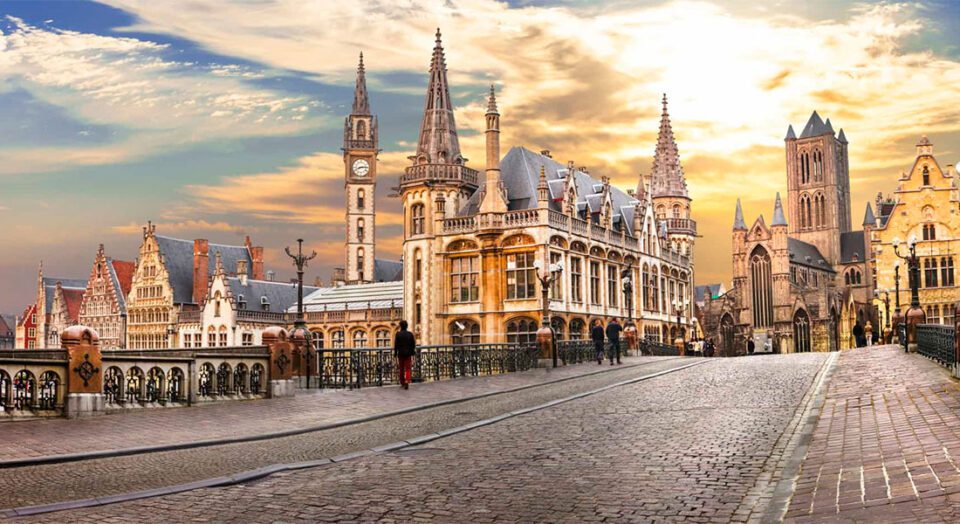Many tourists traveling to Belgium are unaware of the existence of a small town cozily situated at the intersection of the Leie (Lys) and Scheldt rivers. Yes, the attractions of Ghent are not as popular as the famous Manneken Pis in Brussels or the canals of Bruges. But this compact city, where the past and present blend in perfect harmony, has much to offer its guests. Try to dedicate at least one day to a journey through time — from the 21st century to the Middle Ages. Here are the 16 most interesting attractions in Ghent.
Two reasons to visit Ghent
Even if you’ve been traveling through Europe for days and cobblestone streets, ancient architecture, and old cathedrals no longer excite you, the Belgian city that has withstood the onslaught of wars and time will surely captivate you. And there are reasons for this.
Ghent is hailed as the vegetarian capital of the world. There are dozens of restaurants here offering a variety of vegan dishes that will delight the most demanding gourmets. Even if giving up meat is not your life’s credo, try one of the vegetable dishes — you might change your taste preferences. For sweets lovers, we recommend visiting the praline shop Temmerman’s.
For nine years, Ghent has held the title of the most creative city of music. This title was awarded by UNESCO. As dusk falls, countless hospitable bars open their doors, with the main ones being the guitar Mecca Kinky Star, the jazz Hot Club de Gand, and the alternative Café Video for Alternative.
Vrijdagmarkt (Friday Market Square)
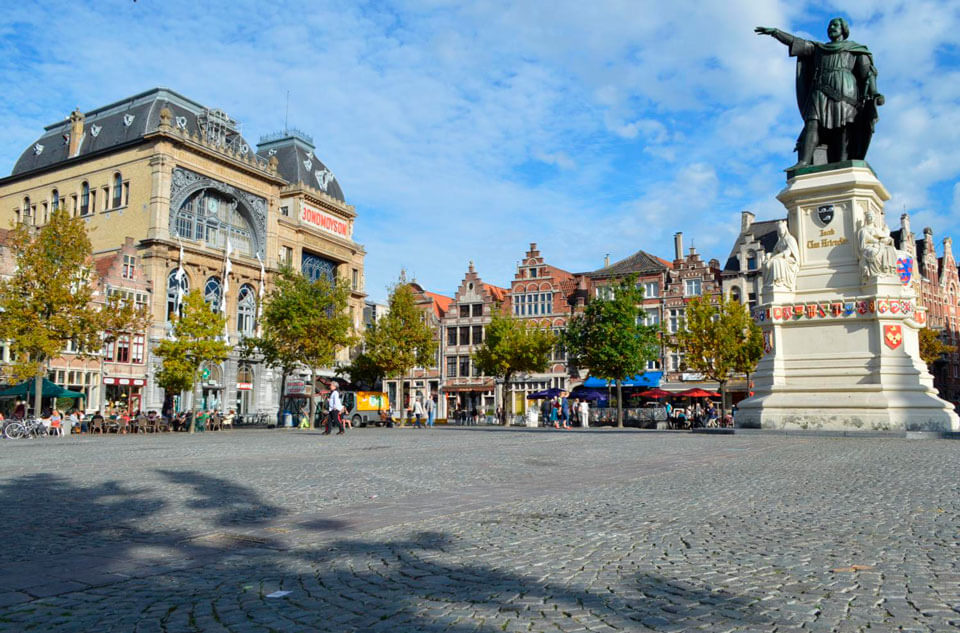
When you find yourself on the main square surrounded by Gothic buildings, you understand why Europe is respectfully called the old lady. This popular place in the Middle Ages was the epicenter of the townspeople’s life. It has witnessed many historical events: from coronations and festive parades to public executions, the last of which took place in 1822. In 1199, a market appeared here, which still exists today. Every Friday at 7:30 AM, the bell rings from the tower of the Toreken house, built in 1450, announcing the start of lively trade.
In the center of Vrijdagmarkt stands a monument dedicated to the leader of the uprising against the Count of Flanders — Jacob van Artevelde. He became the head of the guilds, whose support helped Edward II of England ascend the throne of France in 1340. The pedestal of the monument is decorated with the guild’s coats of arms and images of agreements in which this wise political figure participated. Due to the numerous restaurants, locals call the historic square “an open-air café.” Beer lovers should definitely visit the iconic establishment “Mad Greta” and empty a half-meter mug of one of the 250 types of beer.
Ghent Town Hall
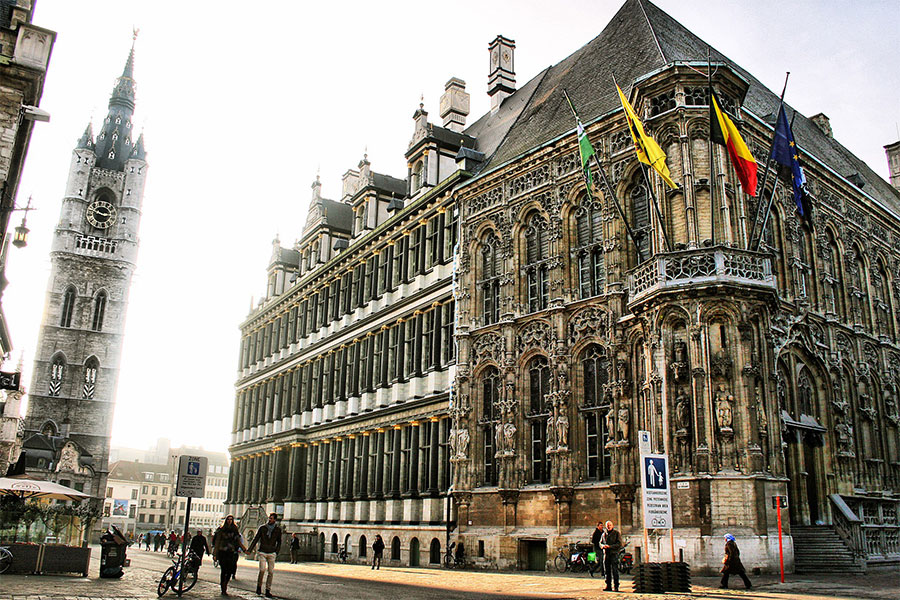
In 1482, the first stone was laid for a building intended to be a meeting place for authorities and guilds. However, the constructed building seemed insufficiently large and luxurious to the city council, so it was decided to expand it. As a result, the Town Hall turned into a building with many faces: the Gothic facade contrasts sharply with the luxurious lines of the Italian Renaissance.
Inside the Town Hall, you will also encounter a variety of styles: see the Arsenal Hall with its high wooden vaults, the Hall of Peace with a black-and-white tile floor in the shape of a labyrinth symbolizing the search for happiness, the Wedding Chapel decorated with stained glass windows, and the Throne Hall where the throne of monarch Joseph II is preserved.
The Town Hall can be visited on weekdays from 8:00 AM to 5:00 PM, closed on Sundays. Entrance is 5 euros, a tour group visit is 8 euros.
Ghent Post Office Building
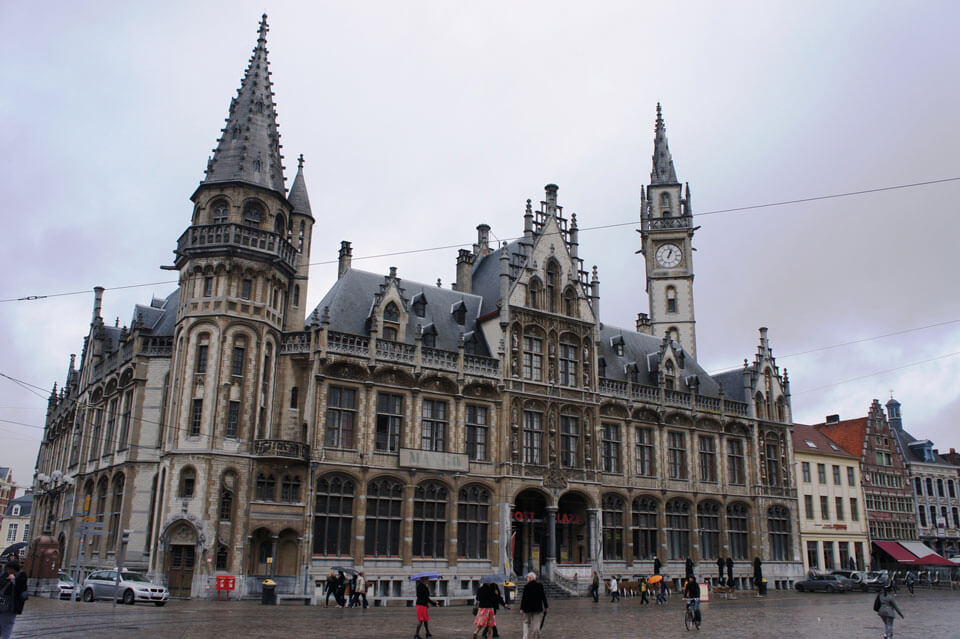
The former post office building, erected in 1909, reveals Belgium captured in stone to Ghent’s guests. The neo-Gothic two-level facade with elements of neo-Renaissance is decorated with three female figures symbolizing Belgium and its main provinces — Wallonia and Flanders. On the lower tier, there are ten smaller sculptures depicting the remaining regions of the country.
The architectural ensemble of the old post office is complemented by corner octagonal towers and a square belfry with a clock and an elegant spire. In the early 21st century, the richly decorated building was converted into the De Post shopping center.
Gravensteen (Castle of the Counts of Flanders)
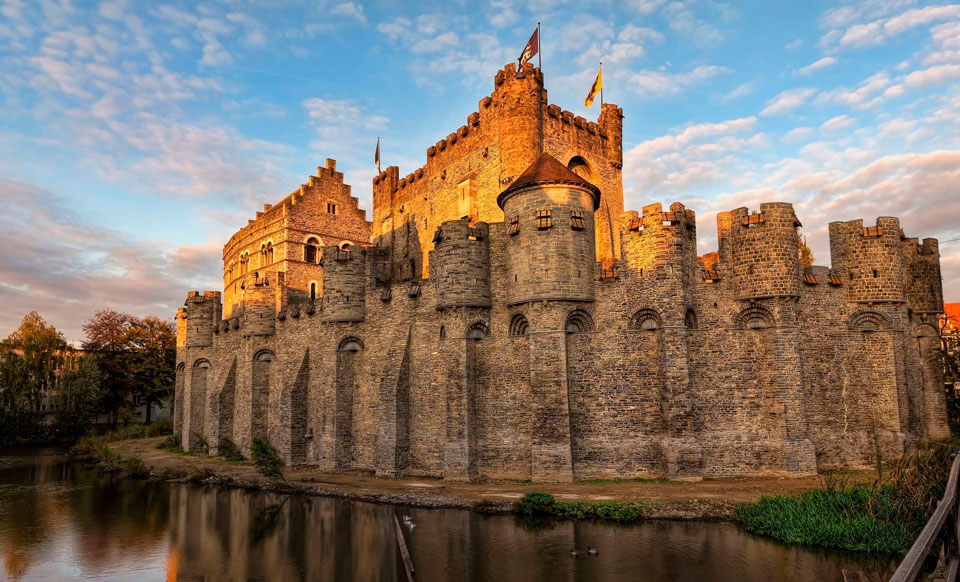
In the city center, surrounded by the waters of the Leie River and the Lieve Canal, lies Ghent’s main attraction — a mighty stone castle built between 1157 and 1191 by order of Count Philip of Alsace. It is said that Gravensteen is the only structure in the country that fully illustrates medieval life. Throughout its history, the castle has served not only as a defensive structure but also as the residence of the Counts of Flanders, a mint, a textile factory, a prison, and a courthouse.
Today, the castle houses a museum, and one of its rooms displays knightly armor and weapons. Sensitive visitors might want to skip the second hall, where the exhibits mainly consist of torture and corporal punishment devices. Instead, head up to the roof to enjoy a panoramic view of Ghent.
Tourists can visit Gravensteen daily from April to October from 10:00 AM to 6:00 PM and from November to March from 9:00 AM to 5:00 PM. The entrance ticket costs 10 euros.
Gerard the Devil’s Castle
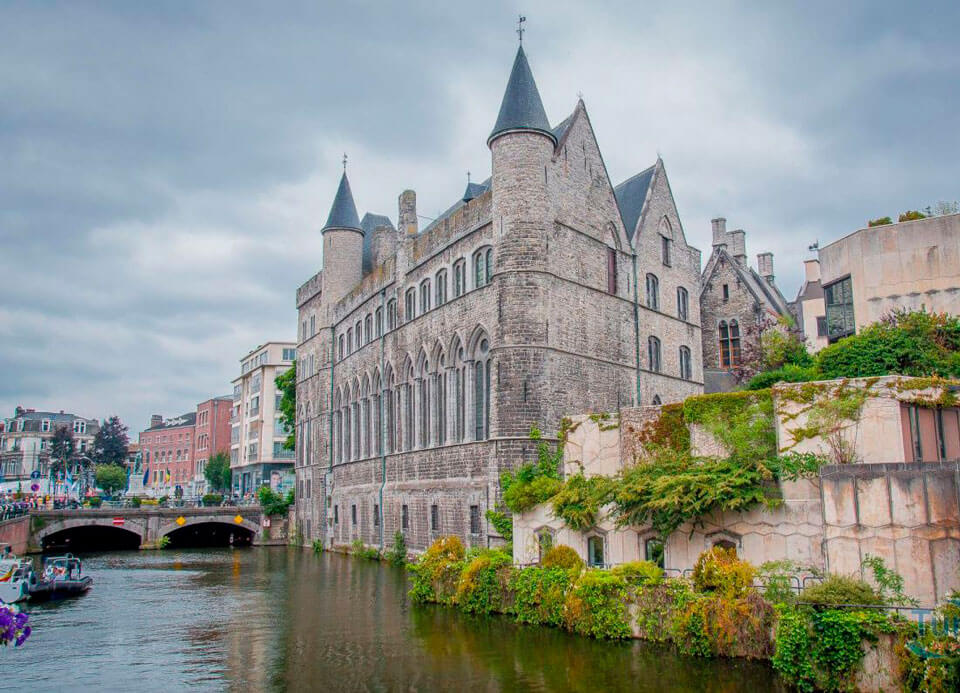
For those who love mysticism and chilling stories, we recommend a walk to Gerard Vilain’s castle, the son of the Ghent count Zeger III. This knight gained the reputation of Bluebeard because, according to legend, he killed five of his wives, earning him the nickname Devil.
The ancient legend and interesting architecture have made Gerard’s refuge a popular attraction. The 13th-century building, with its row of towers and pointed Gothic windows, is the oldest stone structure in the city. Over time, it has served as an armory, a convent, a prison, and an asylum for the insane. Currently, the castle gates are closed to visitors.
Saint Bavo’s Cathedral
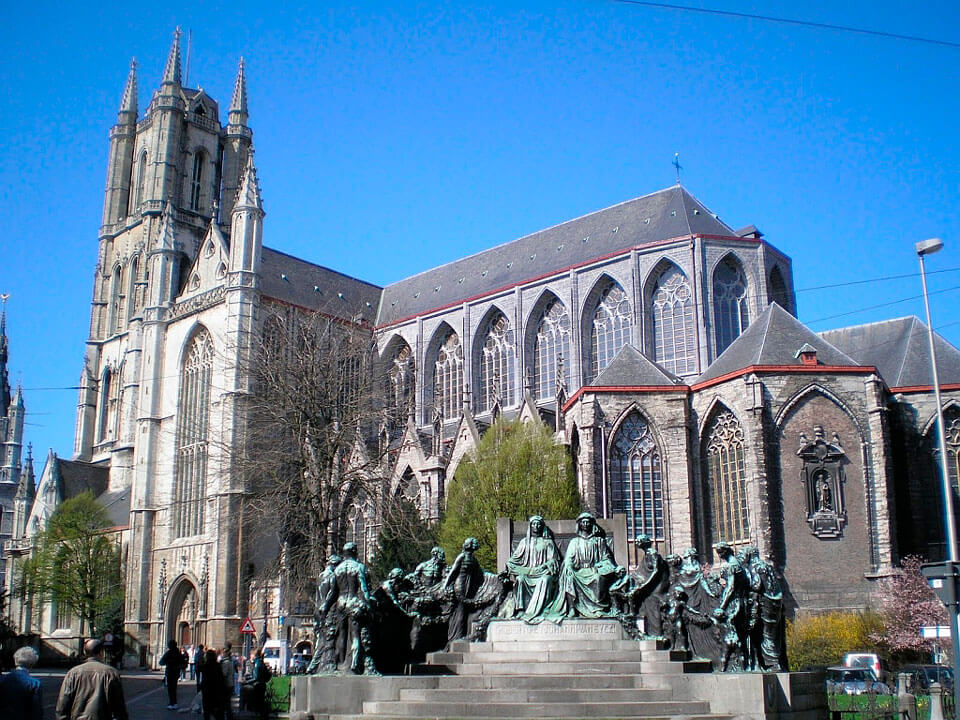
The famous cathedral, built in 1569, embodies the Gothic style in architecture and is a grand structure of brick and granite. Its grandeur is complemented by a square tower with a spire, which lost its roof in a fire in 1602. Under the choir of the basilica in the crypt, nine bishops of the city are buried.
The interiors of the cathedral are in the Baroque style. Every detail here impresses with its monumentality and grandeur. The treasures of the cathedral include chapels with paintings by famous artists, stained glass windows, and a carved pulpit of oak and marble. A special place is occupied by the altarpiece triptych by the Van Eyck brothers, created in the 15th century. On 24 panels, scenes from the Bible are depicted: from the Great Flood to the coming of Jesus. The central part of the masterpiece is currently under restoration.
The cathedral doors are open daily: from April to October from 9:30 AM to 5:00 PM and from November to March from 10:30 AM to 4:00 PM. Entrance costs 4 euros.
Belfry (Belfort)
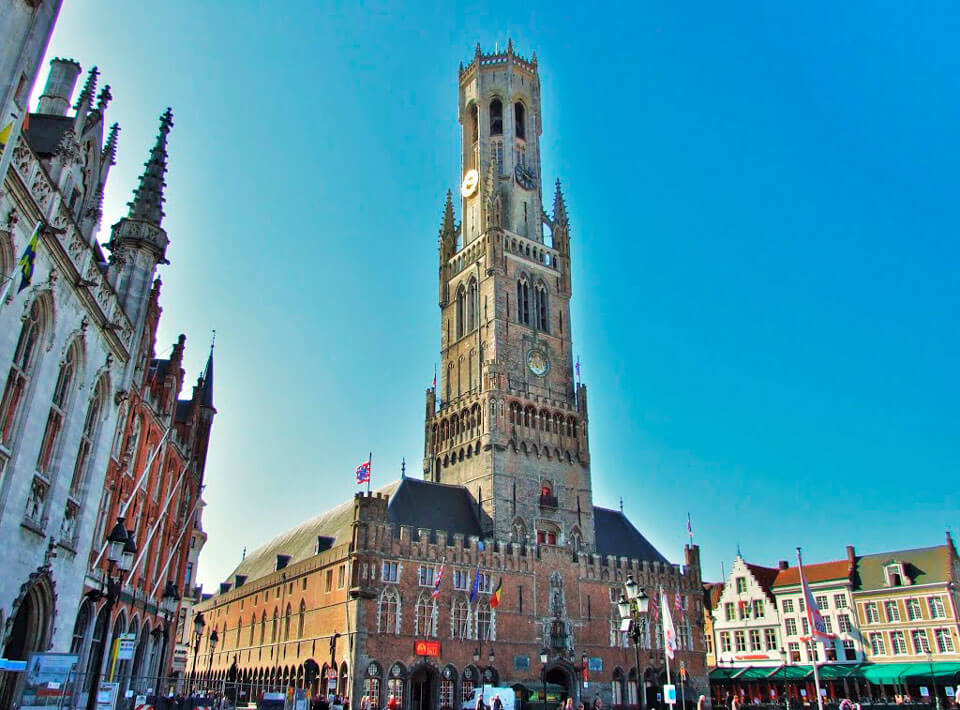
The belfry of Saint Bavo’s Cathedral is echoed by the 91-meter-tall Belfort — a watchtower that alerted citizens to fires, floods, and enemy attacks. The first toll of the alarm bell, shaking the walls of houses with its sound, was heard by Ghent residents in 1338, and 332 years later, the belfry was supplemented with a clock, which is now the oldest in Belgium.
Today, tourists can visit two museums in the Belfort: the archive of the city’s secret documents and a collection of bells. At the entrance, there is a narrow staircase with 400 steps leading to the observation deck. Those who make it to the top are rewarded with a bird’s-eye view of the city and a photo opportunity with the forged golden dragon weathervane, which once adorned the prow of a Viking ship.
The belfry is open daily from 10:00 AM to 6:00 PM. Entrance costs 8 euros.
Graslei and Korenlei
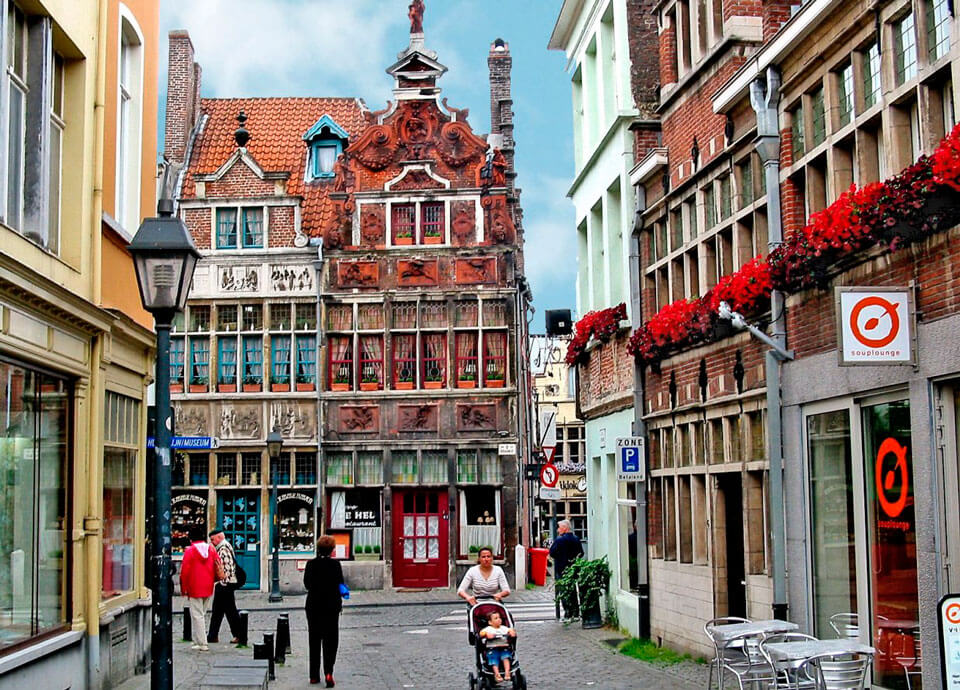
The medieval streets flanking both sides of the Lys River were originally part of the bustling port of the city. These quays are home to architectural treasures — the most beautiful half-timbered houses in Belgium, built by wealthy merchants between the 13th and 17th centuries.
There are several cafes here inviting you to enjoy the sight of boats sailing along the Lys and to taste traditional fries or fluffy Belgian waffles. A sightseeing boat departs from the pier, offering a 40-minute tour of the historic center to admire the silent witnesses of the Middle Ages: Flemish facades, the Great Butchers’ Hall, and the mighty walls of the Castle of the Counts.
Saint Nicholas’ Church
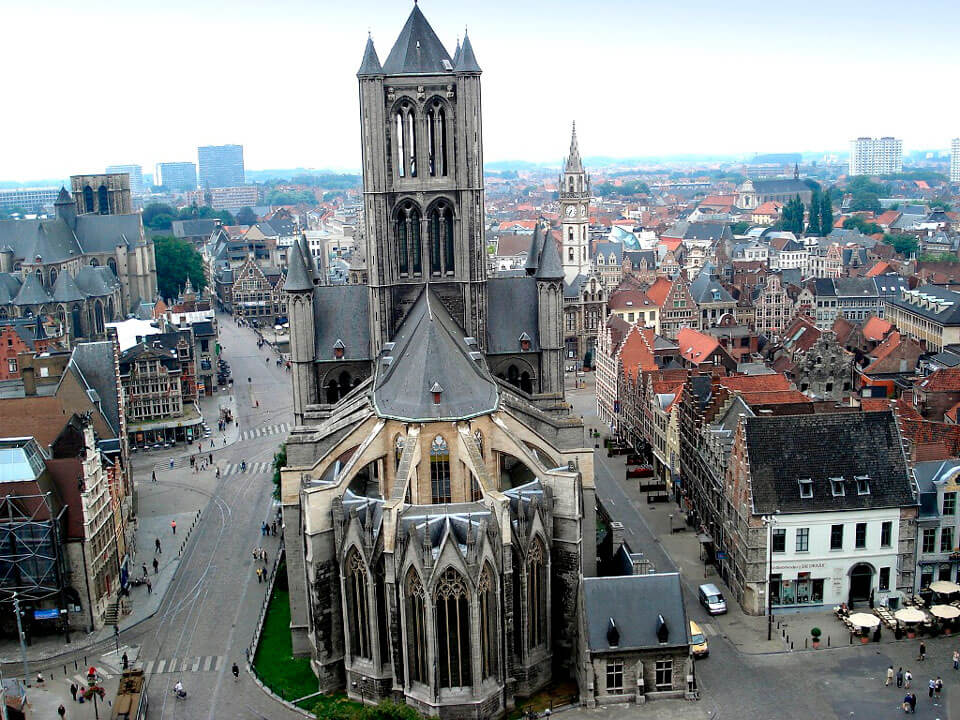
On Korenlei stands one of the oldest cathedrals in the city, named after Saint Nicholas. Previously, there was a Romanesque chapel built in 1100 and destroyed by fire in 1176. The construction of the new Gothic-style church was funded by grain sales and symbolized the city’s wealth. The building material was gray-blue stone, delivered by ships from the Tournai area.
The church underwent multiple reconstructions, and by the 16th century, it had deteriorated significantly. Restoration work began only at the start of the last century and continues today. Currently, the main nave is open to visitors, where the restrained beauty is accentuated by a wooden pulpit, a gilded altar, and an organ by Aristide Cavaillé-Coll.
The church can be visited from Tuesday to Sunday from 10:00 AM to 5:00 PM and on Monday from 2:00 PM to 5:00 PM.
Saint Michael’s Bridge and Church
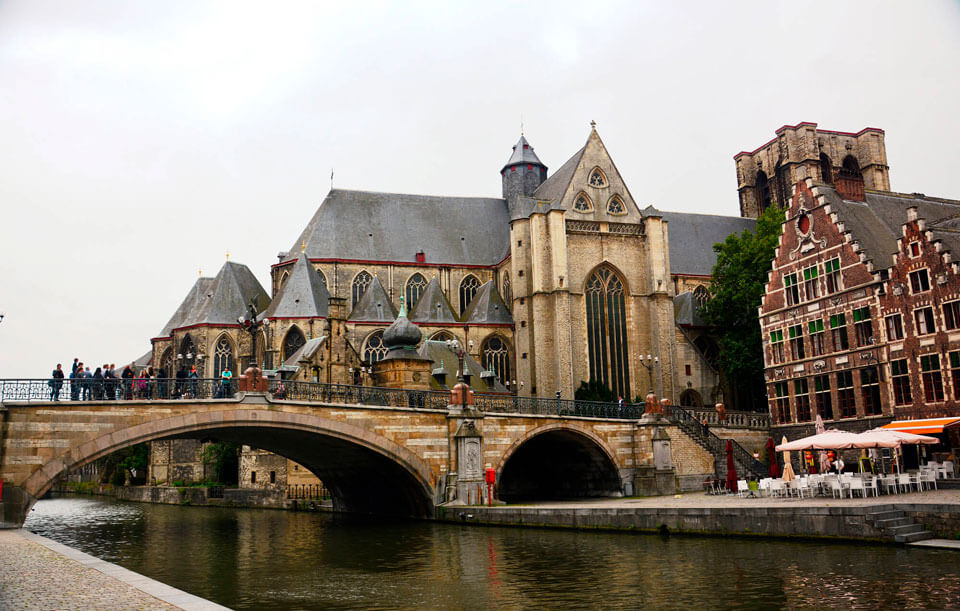
Graslei and Korenlei are connected by a cobblestone bridge offering a fantastic view of the austere medieval stepped gables and cheerful Baroque facades. The small bridge is framed by massive railings, and a bronze statue of Archangel Michael spearing a hydra is installed in the center.
Nearby is the Gothic Saint Michael’s Church, the construction of which began in 1440. The timing was unfortunate — wars, the Reformation, and financial difficulties meant the church opened only 400 years later. The church’s distinctive feature is its western tower. The architect planned a 134-meter structure, but his vision was not realized — the brick structure with a flat roof rises only 23 meters.
The church is open daily from 2:00 PM to 5:00 PM.
Museum of Fine Arts
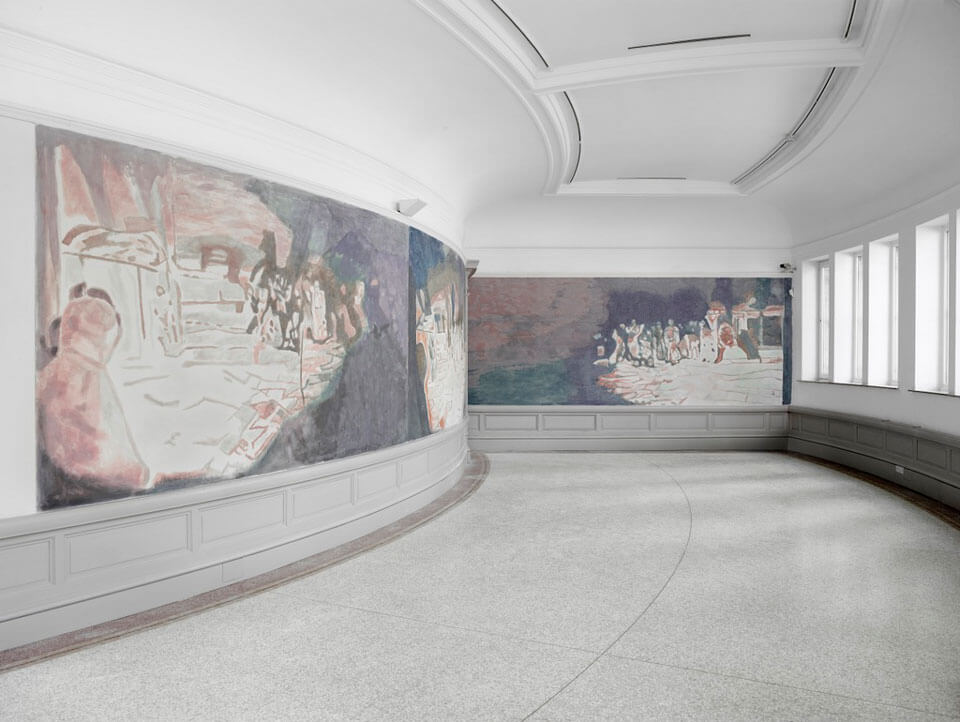
In the spacious halls of the museum, which began in 1802, European schools of painting from the 15th to the 20th century are exhibited. The collection predominantly features works by Flemish artists. Art lovers gather here from all over the world to view the immortal works of Bosch, Heckel, Pourbus, Rubens, and Kirchner.
Currently, the gallery is restoring the painting “Adoration of the Mystic Lamb,” created in the 15th century by brothers Jan and Hubert van Eyck. Over its 600-year history, the painting has faced many challenges: it was a trophy for Napoleon and the Nazis at different times, was stolen multiple times, and even split into parts, but miraculously always returned to Saint Bavo’s Cathedral, as it was the centerpiece of its altar. The legendary work is housed in a studio with glass walls, allowing visitors to see the restorers at work.
Exhibitions are open from Tuesday to Friday from 9:30 AM to 5:30 PM, and on Sunday from 10:00 AM to 6:00 PM. Entrance costs 8 euros, free for those under 18.
Municipal Museum of Contemporary Art (S.M.A.K.)
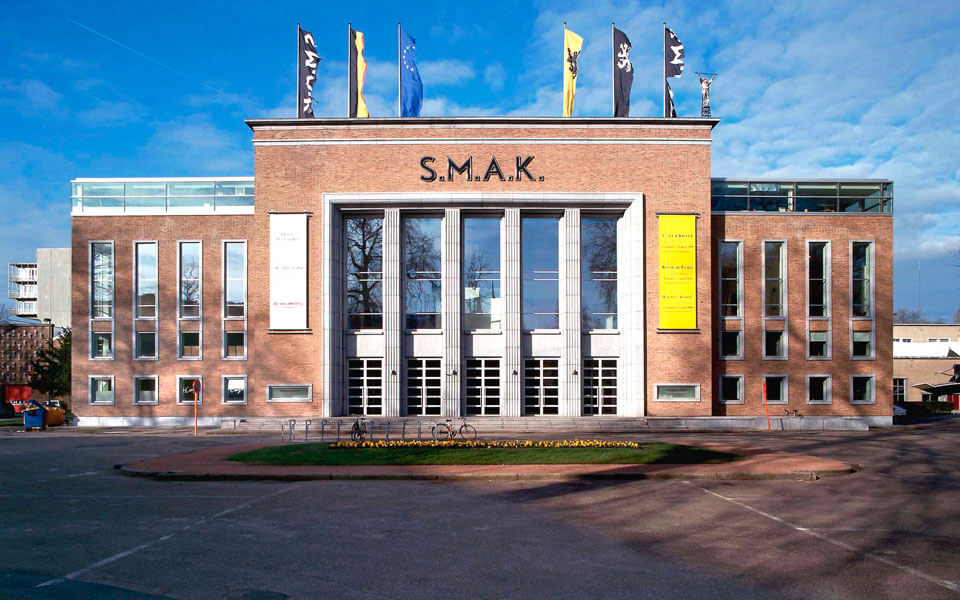
Opposite the art gallery in the former casino building is another cultural and artistic sanctuary, introducing visitors to contemporary trends: pop art, minimalism, and Cobra. Often in tourist brochures, this museum is called “the upstart in the art world.” This dismissive comparison likely stems from its provocative installation exhibitions that expose the vices of modern society.
Founded in 1999, S.M.A.K. showcases the best works of both international and Belgian artists, including Luc Tuymans, Joseph Beuys, David Hammons, Thomas Schütte, Ilya Kabakov, and Marcel Broodthaers.
Opening hours: weekdays (except Monday) from 9:30 AM to 5:30 PM, weekends from 10:00 AM to 6:00 PM. Entrance costs 12 euros.
Museum of Industry, Labour, and Textiles (MIAT)
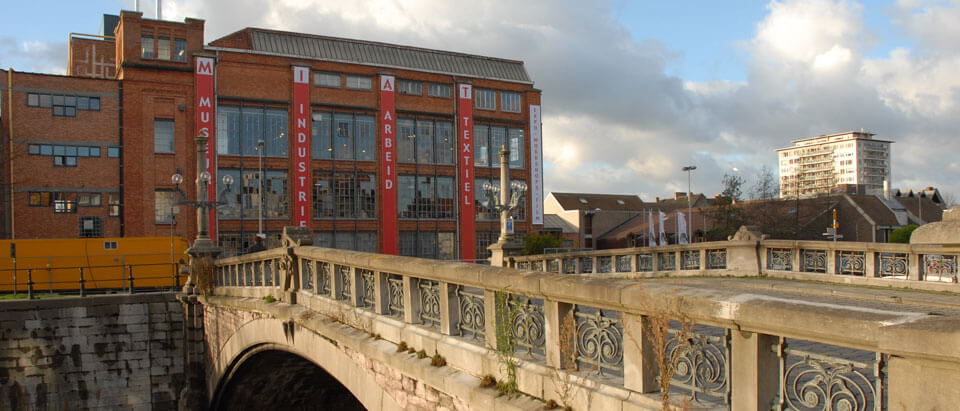
MIAT is a relatively new museum, housed since 1990 in the former Desmet-Guéquier cotton processing factory. The exhibits showcase the development of urban industry from 1750 to the present day. Among the interesting objects is the Mule Jenny spinning machine, smuggled from England in 1800 and marking the start of the industrial revolution in Flanders.
The main MIAT building has five floors and houses various collections. A special place is occupied by a video and photo exhibition dedicated to the harsh working conditions, including child labor. The museum has a café and a shop located in a separate wing.
Opening hours: weekdays from 9:00 AM to 5:00 PM and weekends from 10:00 AM to 6:00 PM.
Rabot Defense Complex
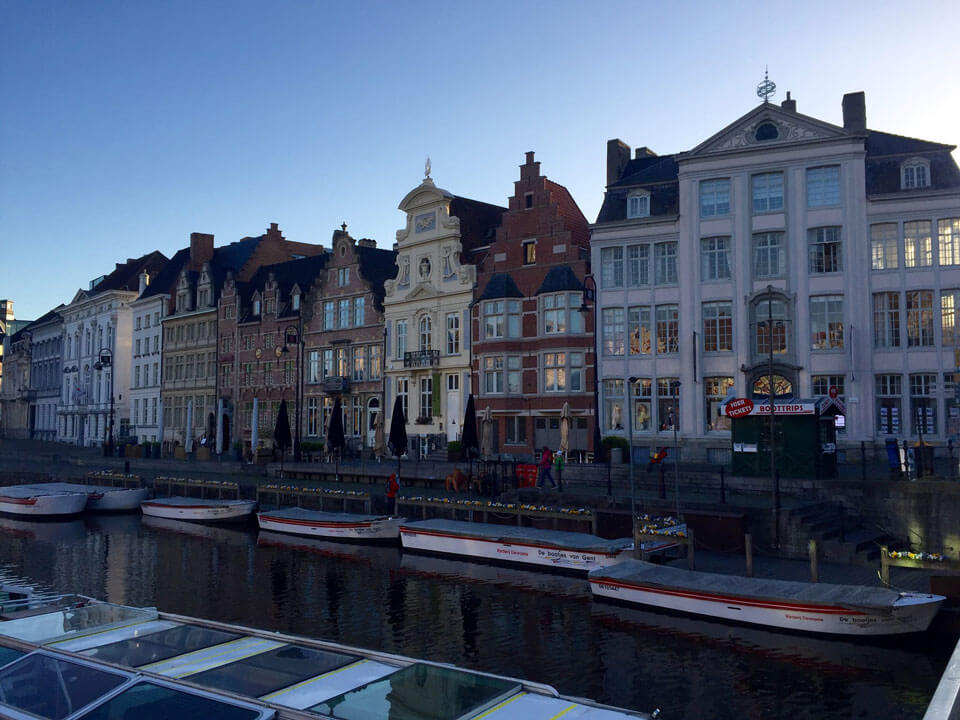
In 1488, Maximilian of Austria exploited the vulnerability of a defensive structure built on the bank of the Lieve Canal and invaded Ghent. After a forty-day occupation, his army had to retreat, and the city authorities decided to strengthen the central building of the fortress wall with two towers. Thus, the Rabot complex was created, giving its name to an entire district.
The stone complex, consisting of a central facade, two adjacent buildings with pointed roofs, and a bridge, has served various purposes over the centuries: archive, gunpowder store, and tavern. It is now equipped for seminars, conferences, and receptions.
Ghent-Sint-Pieters Railway Station
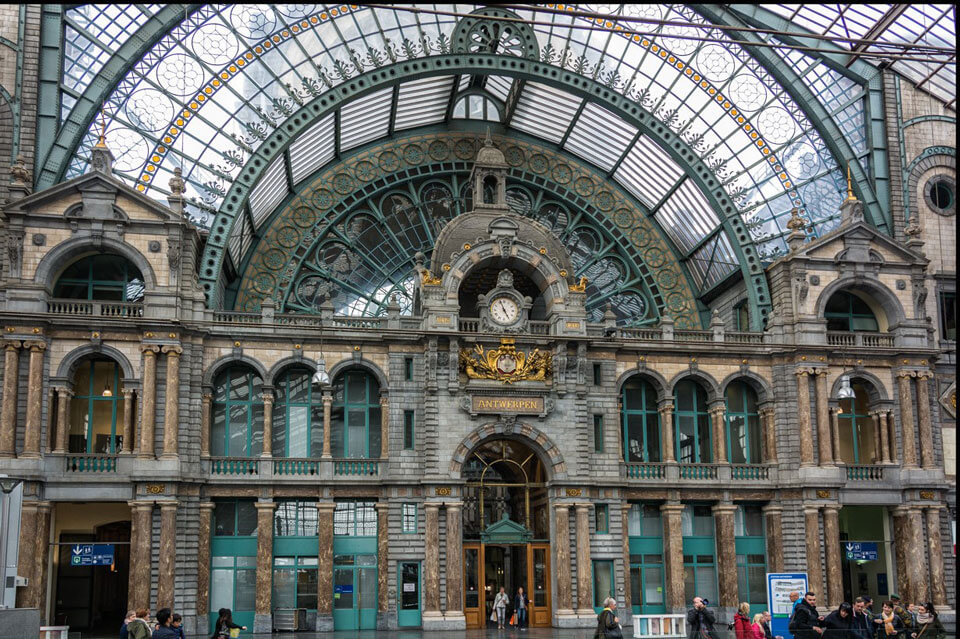
Tourists arriving in the jewel of Flanders by train are greeted by the main railway station — Saint Peter’s Station. The dry description in guidebooks does not correspond to reality. The structure, reminiscent of a Moorish palace of red brick, is enormous. Inside are waiting rooms, a main hall, and corridors resembling endless tunnels. As you admire the frescoed walls and ceilings and the baroque reliefs, don’t miss your train departing from one of the 12 platforms.
Next to the station stands a clock tower. It followed the fate of the famous Italian building in Pisa and eventually leaned off its axis. Due to the risk of collapse, the tower was completely dismantled and then rebuilt.
Ghent lies at the intersection of main roads leading from Brussels and Bruges. Getting to the medieval gem of Europe is very easy: trains from the Main Railway Station of the Belgian capital depart every 15-25 minutes. Depending on the route, the trip takes 35 to 50 minutes. The ticket costs from 8 to 10 euros.

